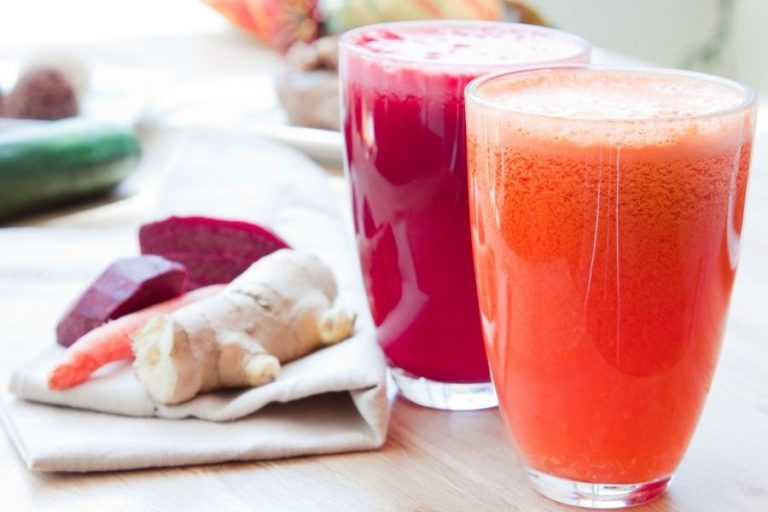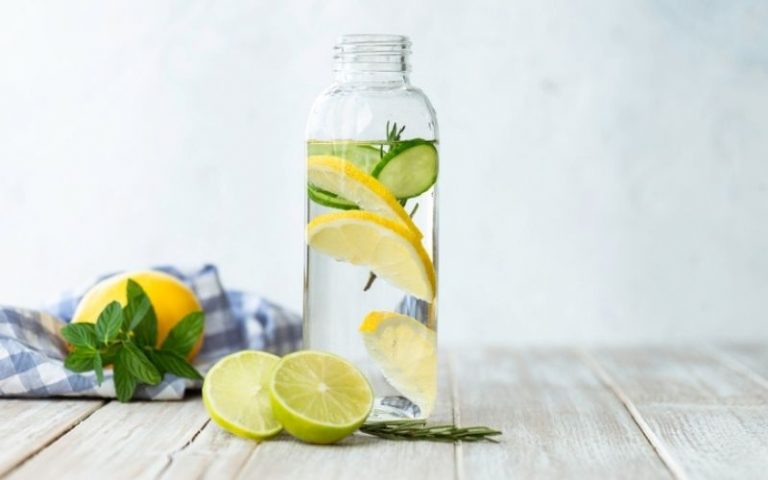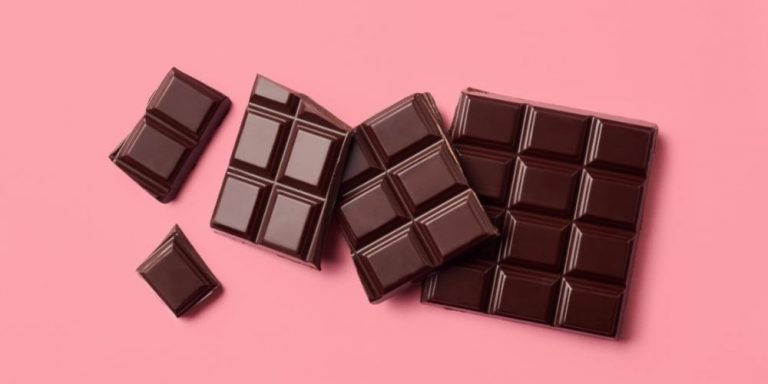20 Unusual Superfoods For Glowing Skin, According To Dieticians

Superfoods help us look and feel our best, and it’s no coincidence that these are also the best foods for healthy skin and a glowing complexion.
Skincare companies are even selling products that include active ingredients found in healthy foods, from carrots to tomatoes!
It may be easier to rub popular toners on your face to reduce acne breakouts, but adding these foods to your diet is tastier, less expensive, and far better at clearing your skin than any product on the market.
And it’s also important to avoid foods that trigger breakouts.
Here’s a list of the 20 best foods for clear skin that banish blemishes for good.
Read Also:
- 6 fruits that can help you rid acne
- I Drank Lukewarm Lemon Water Every Morning For A Month And Experienced Shocking Effects
- How Eating Cereal Before Bed Changed My Sleep Cycle Forever
1) Ginger
Ginger has been used in medicinal medicine for thousands of years. While known to help with an upset tummy more than fight pimples, ginger’s skin superpowers work from the inside out.
Its anti-inflammatory and anti-microbial properties make the root an essential tool for a holistic skin regime.
One study from last year looked at the effect of ginger compounds on wound healing, including blood vessel repair on damaged skin, irritation-free skin cell repair, and improved wound healing. Once peeled, ginger can be enjoyed pickled, brewed, or juiced!
2) Avocado
Avocadoes are those special types of superfoods that can be enjoyed in many different ways to round out a meal with filling, healthy fats.
These fats work with powerful antioxidants like vitamin E to help your skin fight bacteria and inflammatory skin conditions. One study found that mice with atopic dermatitis had less skin itching, redness, and dryness when given avocado.
For your skin’s sake, consider paying the extra dollar for a few slices of avocado on your burger or sandwich next time you get takeout.
3) Chia seeds
Chia seeds take their place on the superfoods list for being rich in the nutrition trifecta of fiber, protein, and omega-3 fatty acids.
The powers of these nutrients don’t stop inside the body, though.
A recent study showed that the proteins found in chia seeds prevent the activity of skin-aging enzymes that cause fine lines and dark spots.
These skin seeds can be enjoyed with smoothies or combined with plant-based milk as pudding!
4) Tomatoes
Tomatoes are rich in lycopene, an antioxidant that gives tomatoes their deep red color, as well as watermelon, grapefruit, and papaya.
Lycopene’s effects on the skin go beyond the color wheel, though. One 2019 study found that lycopene supplementation reduced sebum production and acne-causing bacterial populations in a sample of middle-aged obese individuals.
Another 2019 study found that lycopene-enriched ice cream reduced pro-inflammatory skin markers, including oxidative damage and free radicals to promote clearer skin.
Eating tomatoes is great for clear skin because of this, though it may cause redness and irritation for those with sensitivity to nightshade vegetables (i.e. tomatoes, eggplants, peppers, potatoes, goji berries, etc).
These individuals can get their lycopene fix just as easily with watermelon and papaya to ward off free radical damage.
When it comes to glowing skin, eat the red in the rainbow for a less red-in-the-face look.
5) Sweet potatoes
Sweet potatoes contain beta-carotene, another skin-friendly antioxidant found in yellow- and orange-colored fruits and veggies.
Beta-carotene comes from a class of antioxidants called carotenoids.
These antioxidants are known to help to protect the skin from harmful UV radiation from the sun and ozone exposure, which both contribute to increased sun spots, wrinkles, and redness.
While not a replacement for sunscreen (we wish…), a diet rich in carotenoids can help to reduce and repair skin damage from sun exposure that is too powerful for sunscreen, alone.
6) Oatmeal
You might know about oatmeal’s soothing skin properties if you ever had chickenpox and soaked in a tub of oats to ease the itch.
This is because oats have an antioxidant called avenanthramide that has anti-itching properties. Moisturizing the skin with oat-enriched lotions has been shown to reduce symptoms of skin inflammation, including dryness, scaly skin, roughness, and itching.
You can avoid the Aveeno splurge with a 2-ingredient oat and coconut oil skin mask. Simply mix the ingredients into a paste and apply on any irritated patches of skin (including the face!) for 10-15 minutes. Massage and rinse off with warm water.
7) Leafy greens
Moving on to the green of the rainbow, leafy greens (think kale, spinach, collard greens, and microgreens) keep our skin healthy in addition to helping everything beneath with vitamin K which helps to clot blood and heal wounds on the skin’s surface.
Other cruciferous vegetables such as broccoli and cauliflower also provide a lot of the same healthy nutrients. A juice or smoothie made with any combo of leafy greens can make a filling and refreshing skin tonic snack!
8) Pumpkin
Pumpkins are superfoods for their super high levels of vitamin A, having over 5 times your daily requirement in a single cup! Vitamin A belongs to a class of molecules of retinoids, which benefit the eyes and nerves in addition to the skin.
Retinoids have anti-aging properties that regulate cell formation and death, promote skin hydration, strengthen the skin’s epidermis, and protect collagen against degradation.
Similar to vitamin K, vitamin A also aids wound healing, but through skin cell regulation (including enhanced production of skin cells like collagen, fibronectin, and keratinocytes) and epithelial (top layer of the skin) restoration.
9) Acai
A smoothie bowl staple, acai berries are chock full of pigment-derived antioxidants, especially anthocyanins that give acai berries their reddish-bluish shade.
Their anti-inflammatory effects on the skin were published in a recent article and included reduced bacterial growth on the skin’s surface as well as reduced free radical production in skin keratinocytes and fibroblasts.
Anthocyanin and related pigments also have UV-filtering abilities, reducing oxidative stress on the skin and slowing down the aging process.
10) Citrus fruits
Beyond fighting the common cold or flu, the vitamin C found in citrus fruits like oranges, lemons, limes, and grapefruit has anti-aging properties that keep your skin looking young, supple, and wrinkle-free.
It’s an antioxidant that protects against free radical damage caused by the sun’s UV rays.
Its antioxidant properties also improve blood circulation and wound healing abilities by supporting iron absorption, which also contributes to a healthy glow and less skin inflammation.
Vitamin C also helps to produce collagen, an important protein found on the skin’s surface. Collagen keeps the skin plump and glowing and prevents the appearance of wrinkles and fine lines.
11) Bell peppers
Bell peppers are another rich source of vitamin C, sharing many of the same anti-inflammatory powers as citrus, including collagen production and protection from free radical damage.
Both citrus and bell peppers are mostly water when eaten raw, and these foods can hydrate the body from the inside out.
Healthy collagen production combined with a well-hydrated body promotes younger-looking clear skin.
Bell peppers also contain vitamin A (93% of daily needs in a single cup!) and share the same antioxidant properties as sweet potatoes and pumpkin.
12) Turmeric
Turmeric is a root that has gained recent popularity as a treatment for inflammation and chronic disease.
Turmeric contains an anti-inflammatory nutrient called curcumin that helps to reduce the production of pro-inflammatory proteins like cytokines and TNF-ɑ that overwork the immune system.
One study found that curcumin’s anti-inflammatory properties improved wound healing and reduced symptoms of psoriasis, acne, skin infections, skin cancer, and aging.
Another study showed that curcumin intake can also regulate gut microbiome activity and increase its own intestinal absorption.
A healthy gut microbiome balances bacteria content both inside and outside the body, preventing bacteria and sebum buildup in pores that contribute to blemishes and redness.
Juicing the root along with a bit of ginger makes a refreshing antidote for damaged, irritated skin.
13) Nuts
Nuts like almonds, cashews, walnuts, peanuts, and pistachios are loaded with healthy unsaturated fats that promote cell function and nerve signaling.
These fats also maintain skin cell structure and protect the skin from bad environmental bacteria and irritants. Nuts also contain vitamin E and zinc, which protect the cells from free radicals (sun damage) and stops the formation of cancer-causing compounds.
One recent study found a positive relationship between vitamin E and reduced oxidative damage and redness on the skin.
Vitamin E needs fat to be absorbed by the body, making nuts a great source of both nutrients to keep the skin strong and cancer-free.
Nuts such as brazil nuts can also give your body good levels of selenium which is a trace mineral that provides the skin with key factors to function optimally.
14) Sardines
Sardines contain high amounts of omega-3 fatty acids, healthy polyunsaturated fat with powerful anti-inflammatory effects on the body.
They work directly on the skin’s surface to mediate enzyme activity and repair damage from UV exposure. Their abilities to slow down the spread of melanoma have also been studied.
These little swimmers may stand in salmon’s shadow under the omega-3 fatty fish category, but sardines also serve to shine in the sun to fight its rays and protect the body from skin damage.
15) Dark chocolate
Known for its rich, bittersweet taste and smooth texture, dark chocolate has been celebrated as a sweet antioxidant fix for decades.
Dark chocolate is made from cacao seeds, a rich source of antioxidants like polyphenols and flavonoids.
Both antioxidants can have been shown in studies to protect the skin from sun damage and increase skin thickness, hydration, and blood circulation.
Flavonoids have also been shown to slow cell aging and signs of aging on the skin’s surface.
16) Green tea
Green tea contains a wide variety of nutrients beneficial for the skin, including carotenoids from vitamin A, vitamin E, as well as vitamin C.
One study found that green tea’s polyphenols and other nutrients help to reduce inflamed skin and absorb ultraviolet radiation, which delays sun-related skin aging.
Another study showed that green tea polyphenols can reduce sebum production and blemishes.
We’ve discussed earlier how these nutrients keep the skin clear, young and healthy, but green tea has another nutrient called l-theanine that is truly a skin savior.
L-theanine is an amino acid (a.k.a. what proteins are made out of) that works to reduce skin inflammation like psoriasis by preventing the expression of inflammatory genes and the production of proinflammatory molecules like cytokines.
17) Carrots
Known for being easy on the eyes with their effects on vision, the vitamins found in carrots, like A (from beta-carotene), C, and K, were mentioned earlier with other orange-colored skin foods.
Carrots also contain carotenoid antioxidants lutein and zeaxanthin which are vital to skin health by fighting against free radicals that cause early skin aging and skin cancer caused by UV exposure.
One study found that supplementation of both lutein and zeaxanthin in a sample of 46 volunteers protected against sun exposure and improved skin tone (i.e. dark spots) after 12 weeks.
18) Berries
The darker the berry, the sweeter the juice, and the higher the antioxidant content!
From goji to grapes, all berries contain a beautiful range of antioxidants that reduce oxidative stress and manage the body’s inflammatory response.
They are also very low on the glycemic index which keeps insulin spikes away and blood sugar at normal levels.
Below are the top berries for protecting the skin from outside toxins and nourishing it for glowing skin elasticity.
- Strawberries: An edible fruit related to roses, strawberries are one of the best sources of vitamin C (94% of daily needs in a single cup!) and a great source of manganese (25% per cup). Manganese is a mineral that is necessary for the production of collagen because it produces proline, an amino acid that is important for collagen formation.
- Blueberries: Blueberries also contain anthocyanin, the same polyphenol found in acai berries that give both berries their dark blue color and anti-inflammatory benefits for the skin. One study found that eating a single cup of blueberries a day improves blood circulation and heart health.
- Raspberries and Blackberries: Two more rose-related berries, raspberries and blackberries are one of the best sources of fiber (about 8 grams per cup, almost a third of your daily needs!), which is important for proper digestion and gut health. Like blueberries, raspberries have been shown to improve cardiovascular health and improve blood flow to all organs of the body, including the skin! and blackberries, black raspberries contain anthocyanin, which gives them their rich, dark colors.
19) Miso
Miso is a Japanese seasoning that is made out of fermented soybeans and used to add a salty and savory taste to broth, lean proteins, and veggies.
Fermentation gives miso a heavy dose of probiotics, which are good bacteria that help regulate metabolism, stress, and the inflammatory response.
They break down nutrients for better absorption and enhanced communication between the brain and the gut.
The probiotics that create the body’s microbiome dwell not only inside the intestines but also on the skin’s surface.
Eating more probiotic strains helps your body react to stress more effectively and decreases skin sensitivity, redness, and pimples.
Miso also contains linoleic acid, which is a fatty acid in foods that supports skin structure and plays a key role in wound healing and skin repair by promoting collagen production.
Miso also contains linoleic acid, which is a fatty acid in foods that supports skin structure and plays a key role in wound healing and skin repair by promoting the production of collagen.
20) Kombucha
Kombucha is a fermented tea beverage that has gained popularity recently for its beneficial effects on gut health.
In addition, the antimicrobial and antifungal properties of kombucha on pore-clogging bacteria were shown in a 2016 in-vitro study, preventing skin infection at a microscopic level.
The fermentation is done with yeast microbes, giving this skin tonic live active cultures as well as an acquired taste (almost like a sour gingerale). Sometimes it takes a bit of bacteria inside the body to fight off bacteria outside the body.
Kefir is another beverage with similar benefits.
Final word
When it comes down to the health of our skin, not all health heroes wear capes.
An anti-inflammatory diet consisting of these gut-happy foods keeps the skin looking calm, healthy, and glowing.
Eating foods rich in antioxidants fights off the free radicals that cause skin issues better and for longer than any expensive serum with a trendy ingredient.
Why buy a carrot extract serum when you can just eat a carrot?
The skin’s appearance is a reflection of overall health and wellness, from how we eat to how we move.
It’s no coincidence that all of these foods for clear skin have their own benefits on gut health, whether containing prebiotics, probiotics, or even both.
Clean up the diet to clean up the breakouts!





